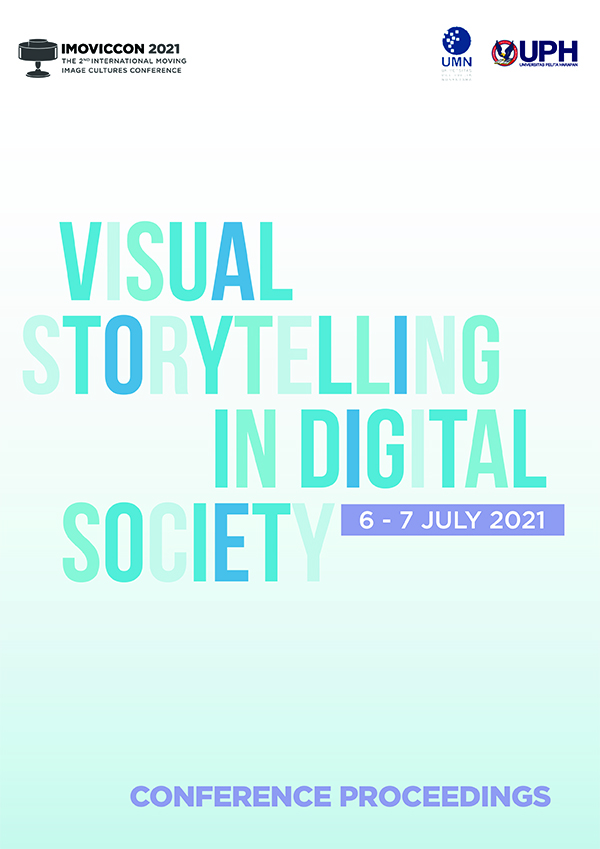Indonesia Kris Representation on Virtual YouTuber “Anya Melfissa” Visual Identity
Abstract
The rapidly evolving motion capture technology has made it possible to solve online identity problems with the medium of moving character design known as Virtual YouTuber. Spontaneous reaction in Livestream media can make a fictional character feels real through a virtual avatar. As such, anthropomorphism representation can be used, and Anya Melfissa is a Virtual Youtuber whose moe anthropomorphism of Indonesia Keris. However, the visual identity of Indonesia Kris is hard to find by most people and the problem is interesting to study using the theory of semiotics, anthropomorphism, and kris visual identity. The method used to analyze Anya Melfissa’s character design will use visual text analysis to identify its visual elements such as icon, index, and symbol. The results of the analysis show that Anya Melfissa’s character design has a kris visual identity which is at the level of thirdness in Peirce’s semiotics theory. The conclusion obtained from the kris representation in Anya Melfissa’s character design is proven to exist and requires a deeper level of understanding of Indonesian kris itself.
References
Lu Z, Shen C, Li J, Shen H, and Wigdor D 2021 More Kawaii than a Real-Person Live Streamer: Understanding How the Otaku Community Engages with and Perceives Virtual YouTubers https:// doi.org/10.1145/3411764.3445660.
Wood M 2019 The Potential for Anthropomorphism in Communicating Science: Inspiration from Japan vol 2 pp 23-34 https://doi.org/10.1177/209660831900200103
Crow D 2010 Visible Signs: An Introduction to Semiotics in the Visual Arts (Second ed.) (Lausanne: AVA Publishing) pp 30-32
Epley N, Waytz A, Cacioppo J T 2007 On seeing human: A three-factor theory of anthropomorphism 114 864-886 https://doi.org/10.1037/0033-295x.114.4.864
Galbraith P W 2014 The Moe Manifesto: An Insider’s Look at the Worlds of Manga, Anime, and Gaming (Tuttle Publishing) pp 5-7
Galbraith P W 2015 Moe - Japanese Media and Popular Culture https://jmpc-utokyo.com/ keyword/moe/
Winter F L 2009 Kitab Klasik Tentang Keris(Panji Pustaka Publishing) pp 1-14
UNESCO 2008 Indonesian kris https://ich.unesco.org/en/RL/indonesian-kris-00112
Rahmi 2018 Posthuman in Japanese Popular Culture: Virtual Idol Hatsune Miku vol 1 pp 81-86
https://doi.org/10.30743/aicll.v1i1.12
Harsrinuksmo B 2004 Ensiklopedi Keris (first ed.) (Gramedia Pustaka Utama Publishing) p 273

